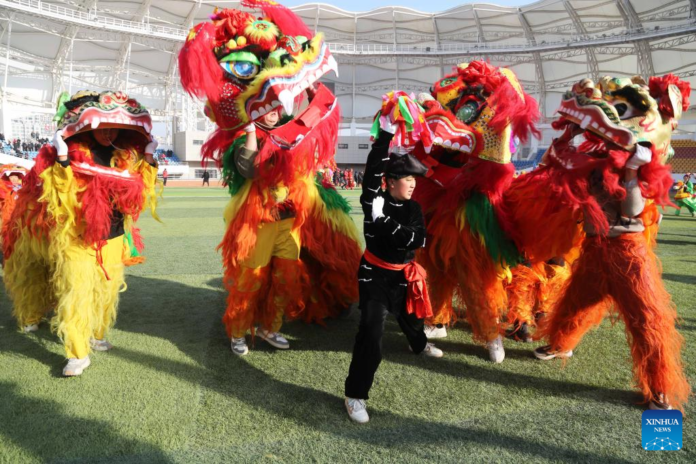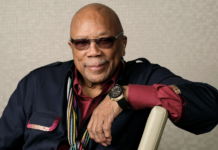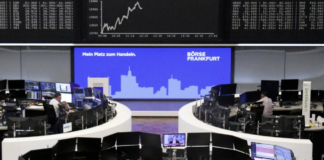BEIJING, Feb 5 — A seven-day temple fair opened in south China’s Guangzhou City on Sunday, which marks China’s Lantern Festival, presenting traditional dances, lion dances, acrobatics, martial arts and delicious food to visitors.
“Temple fairs are childhood memories for many young people. I remember visiting temple fairs when I was a child, and the most important thing was tasting various kinds of foods,” said Xie Jiajun, a local resident.
“Traditional festivals should be celebrated together with everyone!” he said, adding that he has been looking forward to this year’s temple fair for quite some time.
Lanterns decorate the city’s Yuexiu Park, creating a festive mood. Yang Ligang, a tourist from central China’s Hubei Province, posed for a photo with his parents beside a lantern decorated with the Chinese character “Fu,” which means “good fortune.”
“This is the first time I have spent Chinese Lunar New Year with my parents in Guangzhou and I really like the festive atmosphere here. I hope the new year will be full of happiness for my family,” Yang said.
In Longde County, northwest China’s Ningxia Hui Autonomous Region, the carnival-like event Shehuo was held on Sunday.
Celebrations of Shehuo are usually held on the 15th day of the lunar year in some areas of north China.
Performers walked on stilts and presented lion and folk dances to the beat of drums, and firecrackers could be seen throughout the festivities. The locals showed extraordinary enthusiasm during this year’s event, as such celebrations were not held during the past three years due to the COVID-19 epidemic.
More than 2,000 people, including children, joined the performances. Performers are believed to have the power to drive away evil spirits and bring good luck.
“We are expecting a fantastic new year after the celebration,” local resident Ma Jun said.
In Taiyuan City, north China’s Shanxi Province, 72-year-old Han Fuyuan has received many orders for Jinci yuanxiao with osmanthus filling from Beijing, Shenzhen, Guangzhou and Hangzhou.
Chinese people usually eat sweet glutinous rice dumplings called yuanxiao, or tangyuan, during the Lantern Festival. The word “tangyuan” is nearly the same as “tuanyuan,” which means “reunion” in Chinese, meaning the food symbolizes families coming together.
Many believe yuanxiao and tangyuan are different, based on the making process and fillings, and eating yuanxiao and tangyuan is an auspicious custom, representing family reunions, harmony, happiness and good health.
Jinci yuanxiao with osmanthus filling dates back to the Han Dynasty (202 B.C.-220 A.D.) and has been listed as a form of intangible cultural heritage in Taiyuan.
Han works to make yuanxiao every day, and he always brings along his 6-year-old grandson Han Hongjie. “My grandson thinks that making yuanxiao is very interesting, so we’ve trained him from an early age and helped him learn this craft,” he said.
Liu Xiaodan, a 32-year-old bullet train attendant on the Shijiazhuang railway section, is on duty during this year’s Lantern Festival.
“When the train I serve stopped at the Shijiazhuang Station, my husband and son waited there and brought me a bowl of yuanxiao. I’m happy my family had a two-mintue reunion moment on the platform,” said Liu.
In Harbin City, northeast China’s Heilongjiang Province, students from over 10 countries gathered to celebrate the Lantern Festival, learning to make lanterns and yuanxiao.
“In Japan, we celebrate New Year’s Day with our families and get together like today. It’s the first time I have eaten yuanxiao with sesame filling. It’s so yummy,” said Tanaka Mao, a student from Japan.
Winter sports have sustained their popularity one year after the 2022 Beijing Winter Olympics, and they have become a new way for people to celebrate the Lantern Festival. In Qinhuangdao City, north China’s Hebei Province, tourists had fun skiing on the slopes during the festival.
















